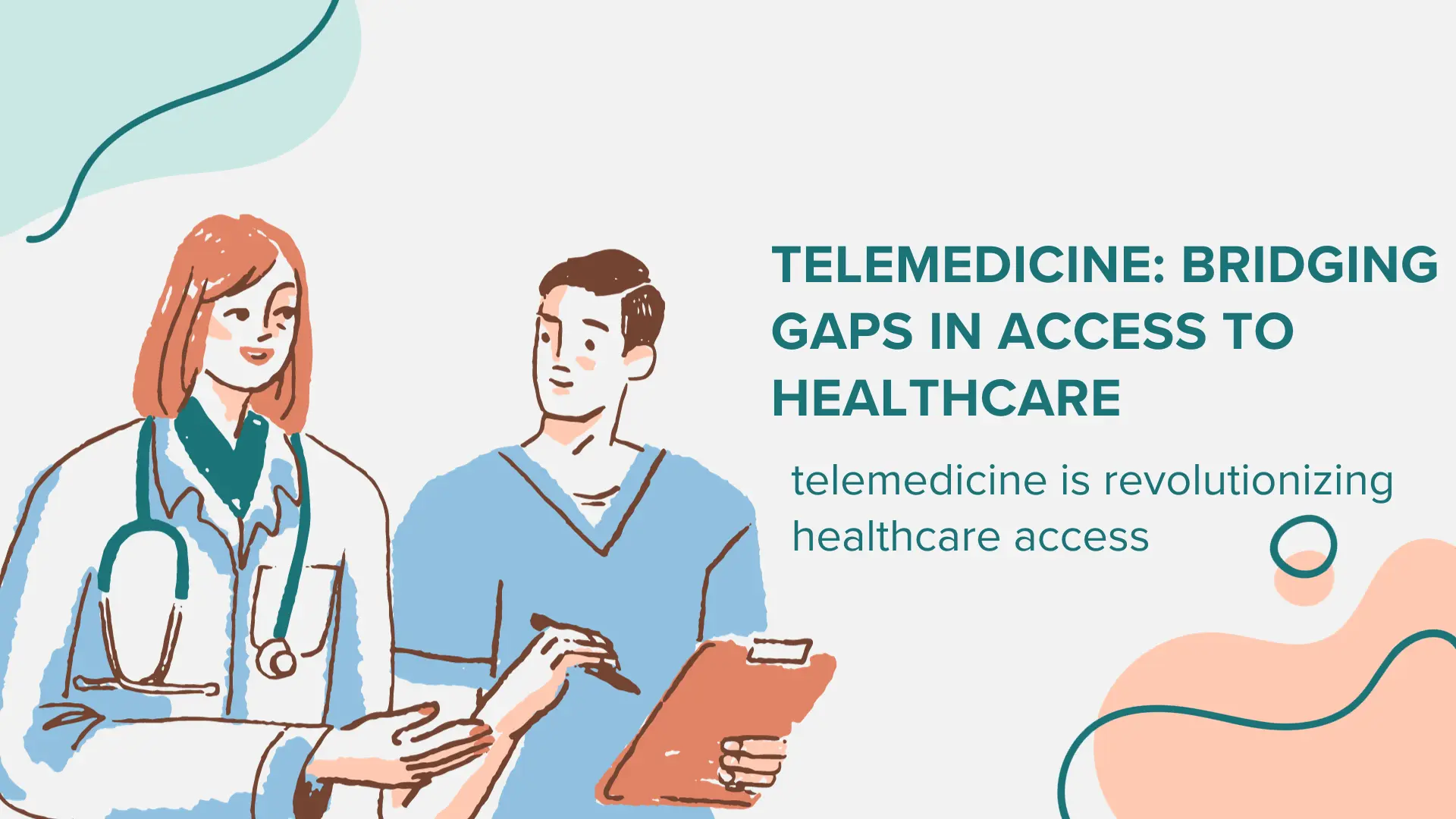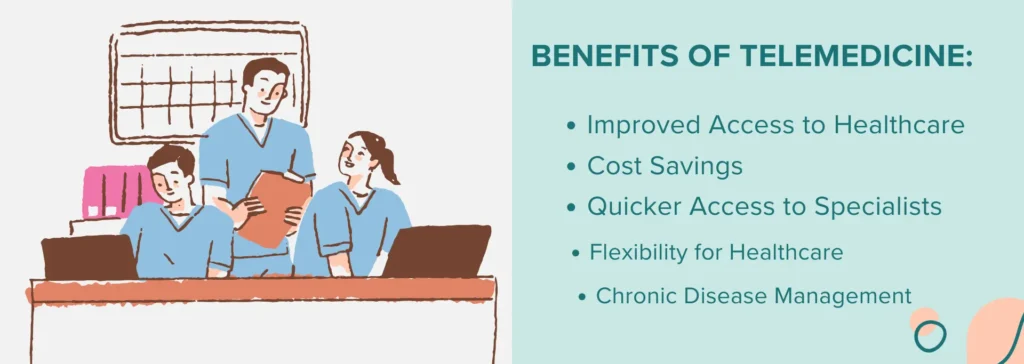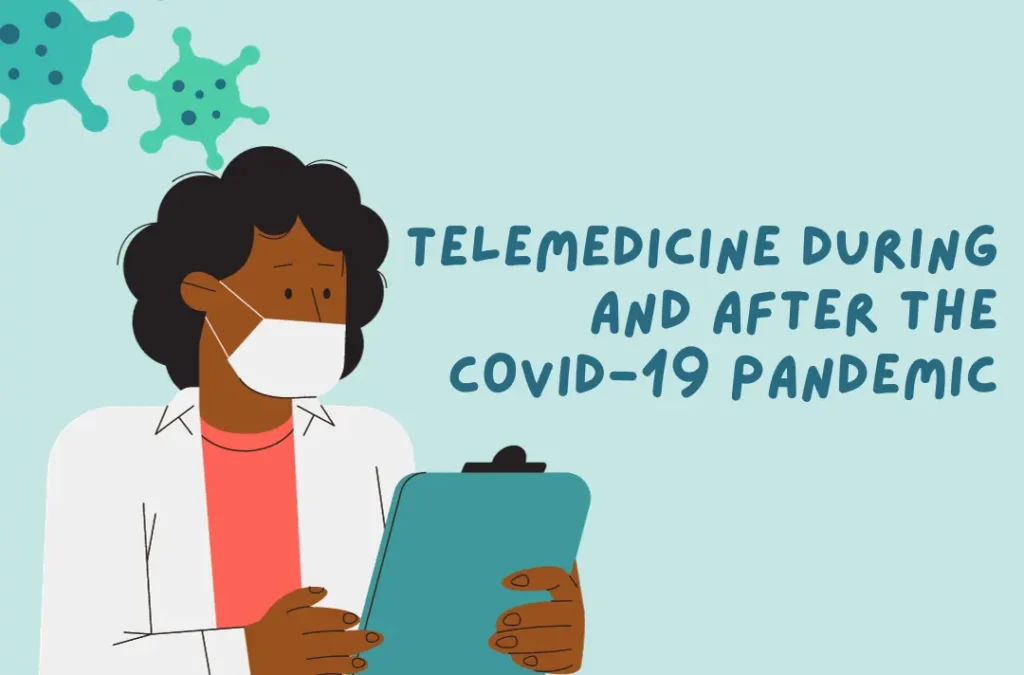
Telemedicine: Bridging Gaps in Access to Healthcare
Healthcare Technology
- John Quarrie
- September 26, 2023
Access to healthcare is a fundamental right, yet millions of people around the world face barriers that prevent them from receiving timely and adequate medical attention. Geographical distance, financial constraints, and even a shortage of healthcare professionals can isolate individuals from the care they urgently need. However, in recent years, a transformative force has emerged to bridge these gaps: telemedicine. This groundbreaking approach harnesses the power of technology to connect patients with healthcare providers remotely, revolutionizing the way we access and receive healthcare services.
Telemedicine is not merely a response to the challenges of our times; it is a catalyst for change in the healthcare landscape, offering hope to underserved communities, reducing costs, and increasing convenience for patients and practitioners alike. In this exploration of “Telemedicine: Bridging Gaps in Access to Healthcare,” We explore the significant influence of telemedicine, including its advantages, difficulties, and bright future in creating a healthcare system that is more accessible and equal for all.
From Telemedicine to Telehealth: A Comprehensive Guide
1. Understanding the Healthcare Access Problem:
The healthcare access problem is a multifaceted challenge that millions of individuals worldwide grapple with daily. At its core, it encompasses various barriers that hinder people from obtaining necessary medical care. Geographical constraints often force individuals in remote or underserved areas to travel long distances to reach healthcare facilities, causing delays in treatment and deterrence from seeking care altogether. Financial obstacles, including the high cost of medical services and lack of insurance, prevent many from accessing vital healthcare resources. Demographic factors, such as age, race, and socioeconomic status, can also influence one’s ability to obtain quality healthcare.
Moreover, a shortage of healthcare professionals in certain regions exacerbates the problem, leading to long wait times and limited appointment availability. Understanding these multifaceted challenges is crucial to appreciating the significance of telemedicine. This solution seeks to break down these barriers and make healthcare accessible to all, regardless of location or financial means.
2. What is Telemedicine?
Telemedicine is a revolutionary approach to healthcare delivery that leverages telecommunications technology to bridge the gap between patients and healthcare providers. It encompasses a wide range of remote healthcare services, including virtual consultations, remote monitoring, and the exchange of medical information through digital channels. At its core, telemedicine allows patients to connect with healthcare professionals in real-time, often through video conferencing or secure messaging platforms, eliminating the need for in-person visits. This approach has the potential to make healthcare more accessible, efficient, and convenient for patients, regardless of their geographical location.
Telemedicine isn’t just about consultations; it extends to remote diagnosis, treatment planning, and even the management of chronic conditions. It enables healthcare providers to reach underserved populations, rural areas, and individuals with limited mobility, increasing the overall reach of healthcare services. As technology continues to advance, telemedicine is poised to play an increasingly central role in modern healthcare systems, offering a promising solution to the challenges of healthcare access, affordability, and efficiency in the digital age.
3. Benefits of Telemedicine:
Telemedicine offers a multitude of benefits that are transforming the healthcare landscape:
- Improved Access to Healthcare: Telemedicine breaks down geographical barriers, enabling individuals in remote or underserved areas to access medical expertise and services without the need for extensive travel.
- Cost Savings: Patients often save money on transportation, parking, and time away from work when they opt for telemedicine consultations. It can also reduce the overall cost of healthcare by preventing unnecessary emergency room visits.
- Convenience and Efficiency: Telemedicine appointments are often more convenient for both patients and healthcare providers. Appointments can be scheduled at times that suit patients’ needs, reducing wait times and the need for extensive paperwork.
- Quicker Access to Specialists: Telemedicine allows patients to consult with specialists who may not be available locally, ensuring timely and expert care.
- Chronic Disease Management: Patients with chronic conditions can benefit from remote monitoring through telemedicine, allowing healthcare providers to track vital signs and make timely adjustments to treatment plans.
- Reduced Exposure to Contagious Diseases: Telemedicine became particularly relevant during the COVID-19 pandemic, as it reduced the risk of viral transmission by minimizing in-person visits.
- Patient Engagement: Telemedicine platforms often provide tools for patients to access their medical records, lab results, and educational resources, promoting better engagement in their healthcare.
- Flexibility for Healthcare Providers: Telemedicine offers flexibility for healthcare providers to serve patients from diverse locations, potentially expanding their patient base.
- Reduced No-Show Rates: Patients are more likely to attend telemedicine appointments, leading to fewer missed visits and better adherence to treatment plans.
- Environmental Benefits: Fewer in-person visits mean fewer vehicle emissions and less strain on healthcare infrastructure, contributing to environmental sustainability.

These benefits underscore telemedicine’s potential to make healthcare more accessible, affordable, and patient-centered while improving overall healthcare outcomes.
4. Telemedicine's Impact on Underserved Communities:
Telemedicine has a profound impact on underserved communities by addressing longstanding healthcare disparities. These communities, often located in rural or economically disadvantaged areas, face significant challenges in accessing quality healthcare. Telemedicine serves as a lifeline for them in several ways:
- Access to Specialists: Underserved areas often lack specialized healthcare providers. Telemedicine connects residents with specialists, ensuring they receive expert care without traveling long distances.
- Timely Care: Telemedicine enables rapid response in emergencies, reducing the risk of adverse outcomes due to delayed treatment.
- Chronic Disease Management: In communities with a high prevalence of chronic illnesses, telemedicine allows for continuous monitoring and management, improving health outcomes.
- Mental Health Services: Underserved areas often lack mental health resources. Teletherapy and virtual counseling sessions extend vital mental health support to these communities.
- Reduced Healthcare Costs: Telemedicine minimizes travel expenses, helping financially vulnerable individuals access care without the burden of significant costs.
- Maternal and Pediatric Care: Telemedicine enhances prenatal and pediatric care, which is critical for maternal and child health in underserved regions.
In sum, telemedicine acts as an equalizer, ensuring that individuals in underserved communities receive the same level of care as those in urban or well-resourced areas, addressing longstanding healthcare disparities and improving overall community health.
5. Challenges and Concerns:
While telemedicine offers numerous benefits, it also faces several challenges and concerns that must be addressed for its continued success:
- Privacy and Security: The electronic exchange of sensitive medical information raises concerns about data privacy and security. Ensuring compliance with strict healthcare data regulations (like HIPAA in the United States) is crucial to protect patient information.
- Digital Divide: Only some have equal access to the necessary technology for telemedicine, such as a stable internet connection or a device. This digital divide can exacerbate healthcare disparities.
- Licensing and Regulation: Telemedicine often involves healthcare providers serving patients across state or national borders. Licensing and regulatory issues can be complex, requiring clear guidelines to ensure safe and effective care.
- Quality of Care: Some argue that telemedicine may provide a different level of care than in-person visits, as it may lack hands-on examinations or physical assessments.
- Technology Reliability: Technical issues, like connectivity problems or platform glitches, can disrupt telemedicine sessions and hinder the patient-provider relationship.
- Reimbursement and Insurance Coverage: The reimbursement policies of insurance providers and government healthcare programs can vary, impacting the financial viability of telemedicine for both patients and providers.
6. The Future of Telemedicine:
The future of telemedicine holds immense promise as it continues to evolve and shape the healthcare landscape. Several key trends and developments suggest a bright future for this transformative approach to healthcare:
- Technological Advancements: Rapid advances in technology, including improved connectivity, wearable devices, and AI-driven diagnostics, will enhance the capabilities and reach of telemedicine.
- Remote Monitoring: Continuous remote monitoring of patient’s vital signs and health metrics will become more widespread, allowing for early detection and proactive management of health conditions.
- Telemedicine Ecosystems: Telemedicine will become seamlessly integrated into healthcare ecosystems, facilitating smoother transitions between in-person and virtual care.
- Telemedicine Specialization: More healthcare providers will specialize in telemedicine, offering expertise in remote care and optimizing the patient experience.
- Global Outreach: Telemedicine will play a vital role in global health initiatives, improving healthcare access in underserved and developing regions.
As telemedicine’s capabilities expand, it will play an increasingly pivotal role in providing accessible, efficient, and patient-centered healthcare services, ultimately shaping the future of medicine.
7. Telemedicine During and After the COVID-19 Pandemic:
The COVID-19 pandemic thrust telemedicine into the spotlight, propelling it from a promising healthcare innovation to an essential tool for patient care. During the pandemic, telemedicine played a critical role in several ways:
- Safety: Telemedicine reduced the risk of viral transmission by limiting in-person interactions, making it a preferred option for routine healthcare needs.
- Continuity of Care: It ensured that patients with chronic conditions or non-COVID-related illnesses received uninterrupted care, preventing potential health crises.
- Screening and Triage: Telemedicine was instrumental in assessing COVID-19 symptoms, facilitating early detection, and guiding patients on appropriate next steps.
- Mental Health Support: With the pandemic’s mental health toll, teletherapy and virtual counseling provided much-needed emotional support.
As the pandemic wanes, telemedicine’s significance persists. It has transformed healthcare delivery, and many anticipate its continued growth in a post-pandemic world, as it offers convenience, accessibility, and efficiency. Regulatory changes and increased public acceptance suggest that telemedicine will remain an integral component of modern healthcare, improving patient access and healthcare outcomes.
8. Telemedicine's Role in Global Healthcare:
Telemedicine holds immense potential in transforming global healthcare by addressing critical challenges and expanding access to quality medical services. Its role in global healthcare can be summarized as follows:
- Access to Remote Areas: Telemedicine overcomes geographical barriers, enabling healthcare services to reach remote and underserved regions where healthcare infrastructure is limited or absent.
- Specialized Consultations: It facilitates access to specialist consultations for patients in regions lacking specialized medical professionals.
- Emergency Response: Telemedicine aids in disaster management and emergency response by connecting disaster-stricken areas with medical expertise and resources.

- Global Health Equity: Telemedicine promotes health equity by ensuring that individuals worldwide can access healthcare services regardless of their location or economic status.
- Capacity Building: It supports capacity building and knowledge sharing among healthcare professionals globally, fostering collaborative approaches to healthcare challenges.
- Telemedicine Partnerships: Cross-border telemedicine collaborations between countries and organizations enhance healthcare access and quality on a global scale.
- Global Health Initiatives: Telemedicine plays a vital role in international health initiatives, such as disease prevention, vaccination campaigns, and telehealth education.
As technology continues to advance and global healthcare disparities persist, telemedicine emerges as a powerful tool for improving healthcare access, reducing disparities, and advancing global health outcomes.
Conclusion:
In conclusion, telemedicine stands at the forefront of healthcare innovation, addressing longstanding challenges in access to medical services while shaping the future of healthcare delivery. It has emerged as a pivotal solution, particularly in times of crisis such as the COVID-19 pandemic, demonstrating its adaptability and effectiveness. Telemedicine’s benefits, including improved access, cost savings, and convenience, underscore its potential to revolutionize healthcare. It not only bridges geographical gaps but also empowers underserved communities, offering hope for better health outcomes.
However, challenges like privacy concerns, the digital divide, and regulatory complexities must be met with thoughtful solutions to unlock telemedicine’s full potential. As technology continues to advance and healthcare systems evolve, telemedicine’s role in global healthcare is poised to expand, promoting health equity, patient empowerment, and enhanced healthcare experiences for all. It is clear that telemedicine is not just a fleeting trend; it is an integral part of the future of healthcare.
FAQs:
1. What is telemedicine?
Telemedicine is the use of technology, such as video conferencing or secure messaging, to provide remote medical consultations and healthcare services.
2. How does telemedicine work?
Telemedicine allows patients to connect with healthcare providers through digital platforms, enabling real-time communication and medical assessments.
3. What are the benefits of telemedicine?
Benefits include improved access to healthcare, cost savings, convenience, quicker access to specialists, and enhanced chronic disease management.
4. What challenges does telemedicine face?
Challenges include privacy concerns, the digital divide, licensing and regulation complexities, ensuring the quality of care, and resistance to change.
5. Is telemedicine as effective as in-person healthcare?
Telemedicine can be just as effective for many routine and follow-up appointments, but some situations may still require in-person visits.
6. Is telemedicine secure and private?
Telemedicine platforms adhere to strict security and privacy standards, such as HIPAA in the United States, to protect patient information.
7. Can I get prescriptions through telemedicine?
Yes, healthcare providers can prescribe medications through telemedicine, depending on the specific regulations in your region.
8. How can I access telemedicine services?
You can typically access telemedicine services through a healthcare provider’s website or a dedicated telehealth platform, often via a smartphone, tablet, or computer.
9. Does insurance cover telemedicine?
Many insurance providers now cover telemedicine services, but coverage can vary. It’s advisable to check with your insurance company for details.
10. What is the future of telemedicine?
The future of telemedicine holds promise, with advancements in technology, increased adoption, and ongoing regulatory changes suggesting continued growth and integration into healthcare systems worldwide.
Reference sites:
To find reliable and up-to-date information on the topic of “Telemedicine: Bridging Gaps in Access to Healthcare,” consider referencing reputable websites, organizations, and academic institutions. Here are some authoritative sources:
- American Telemedicine Association (ATA): The ATA is a leading organization in the field of telemedicine, providing resources, research, and guidelines.
- World Health Organization (WHO): The WHO offers insights and reports on telemedicine’s global impact on healthcare.
- Centers for Medicare & Medicaid Services (CMS): CMS provides information on telehealth policies and regulations in the United States.
- The Telehealth Resource Centers (TRCs): TRCs are regional centers in the United States that offer guidance and resources on telehealth implementation.
- HealthIT.gov: Managed by the Office of the National Coordinator for Health Information Technology (ONC), this website provides insights into health IT, including telehealth.
- National Center for Biotechnology Information (NCBI): NCBI offers a wealth of scholarly articles and research papers related to telemedicine.
- Telemedicine and e-Health Journal: This peer-reviewed journal publishes the latest research and developments in telemedicine.
- Health Affairs: Health Affairs publishes articles, reports, and policy briefs on various healthcare topics, including telemedicine.
- Harvard Health Blog: Harvard Health Publishing often features articles and expert insights on telemedicine and its role in healthcare.
- The Commonwealth Fund: The Commonwealth Fund conducts research and analysis on healthcare access and quality, including telemedicine.

